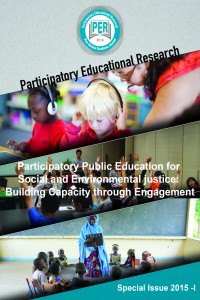Abstract
References
- Dahl, M., 2002, 1457 Morrison St, Port Coquitlam, British Columbia V3C2N6.
- McIntyre-Mills,J.. 2010. ‘Wellbeing, Mindfulness and the Global Commons’, Journal of Consciousness Studies, Volume 17, Numbers 7-8, 2010, Imprint Academic
- New Zealand Prisoner Health Research (2005) Public Health Intelligence Occasional Bulletin No 37
- Sen, A. 2009. The Idea of Justice. Position, Relevance and Illusion. The Belnap Press of Harvard University Press, Cambridge, Massachusetts.
- Sacks, O. 1990 Seeing Voices. Vintage Book, a division of Random House Inc. New York.
- Who: http://www.who.int/mediacentre/factsheets/fs300/en
Participatory Education Research for Capacity Building to enhance capabilities and quality of life of prisoners with hearing loss in New Zealand prisons: implications for social justice
Abstract
By
using participatory action research, we can advance public education on the
need to enhance the capabilities of prisoners with hearing loss and the
capacity of prison staff to understand the needs of such prisoners. New Zealand
Prison officers work in a situation where 1:3 prisoners have hearing loss and
endure presenting compensatory behaviours such as anger, frustration and
depression. Prisoners with disabilities are viewed by some as society’s most
powerless and vulnerable, yet they can elicit negative judgments of shame and
disgust from the more powerful, who are those most able to initiate change so
desperately needed by prisoners to change their life paths from recidivism to
successful re-integration. Nussbaum’s list of Central Human Capabilities outlines
substantial freedoms that every person has the opportunity to apply, which
prisoners with hearing loss need, to gain equity. When considering the
practical application of these capabilities we can hypothesize they will offer
prisoners the range of rights defined by the Convention on the Rights of
Persons with Disabilities (CRPD) and the Universal Declaration of Human Rights
1948. By applying the Capabilities Approach through the CRPD the power of
vulnerable prisoners increases, enabling all in society to originate from the
same level and thus the application of the equally balanced social contract
becomes possible. From that the Aristotelian approach can apply, whereby it is
the job of a good political arrangement to provide each and every person with
what they need to become capable of living rich and flourishing human lives.
Keywords
Marginalised prisoners with hearing loss hard of hearing social contract CRPD Central Human Capabilities
References
- Dahl, M., 2002, 1457 Morrison St, Port Coquitlam, British Columbia V3C2N6.
- McIntyre-Mills,J.. 2010. ‘Wellbeing, Mindfulness and the Global Commons’, Journal of Consciousness Studies, Volume 17, Numbers 7-8, 2010, Imprint Academic
- New Zealand Prisoner Health Research (2005) Public Health Intelligence Occasional Bulletin No 37
- Sen, A. 2009. The Idea of Justice. Position, Relevance and Illusion. The Belnap Press of Harvard University Press, Cambridge, Massachusetts.
- Sacks, O. 1990 Seeing Voices. Vintage Book, a division of Random House Inc. New York.
- Who: http://www.who.int/mediacentre/factsheets/fs300/en
Details
| Primary Language | English |
|---|---|
| Subjects | Studies on Education |
| Journal Section | Research Articles |
| Authors | |
| Publication Date | November 30, 2015 |
| Acceptance Date | June 23, 2015 |
| Published in Issue | Year 2015 Special Issue 2015 I |



